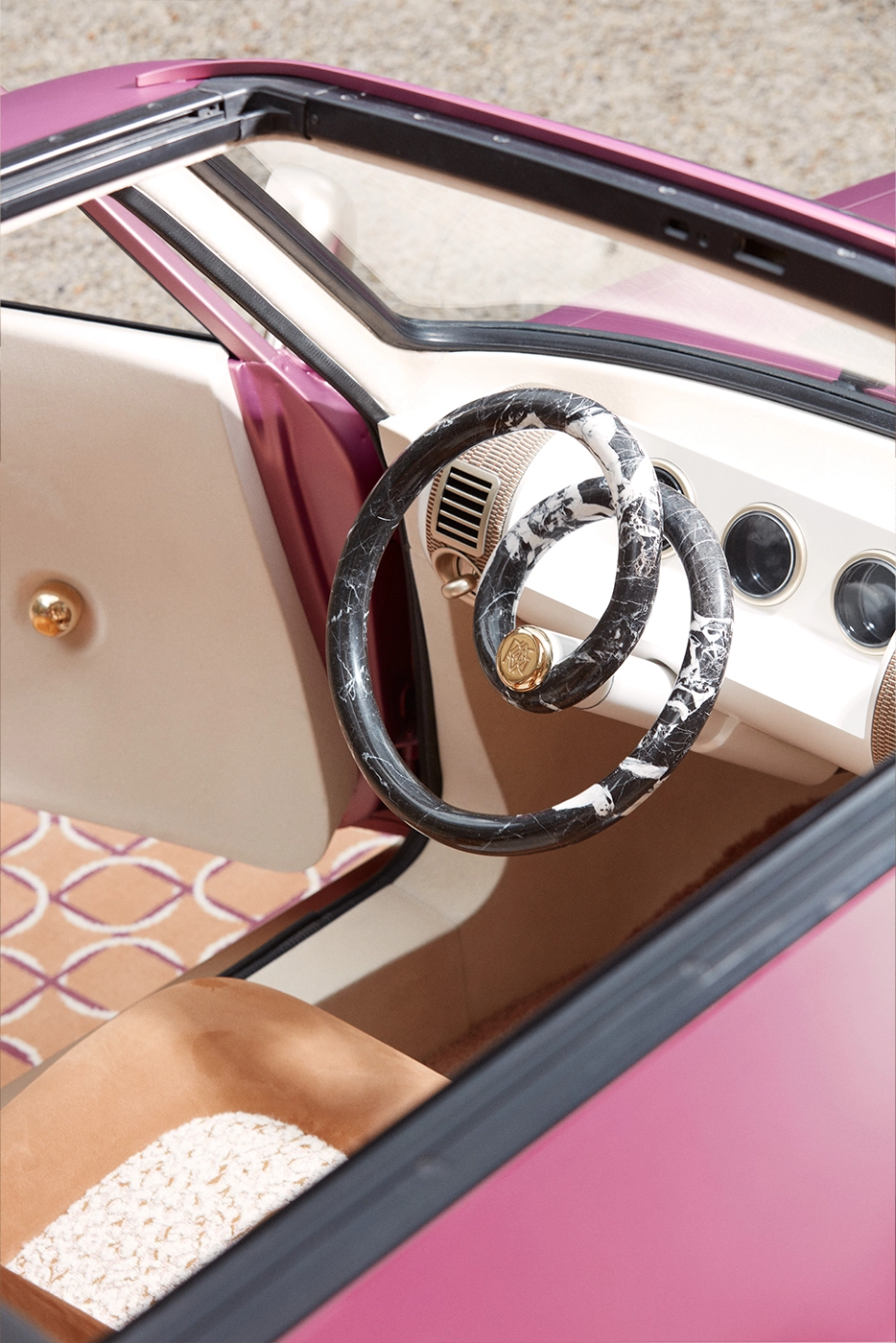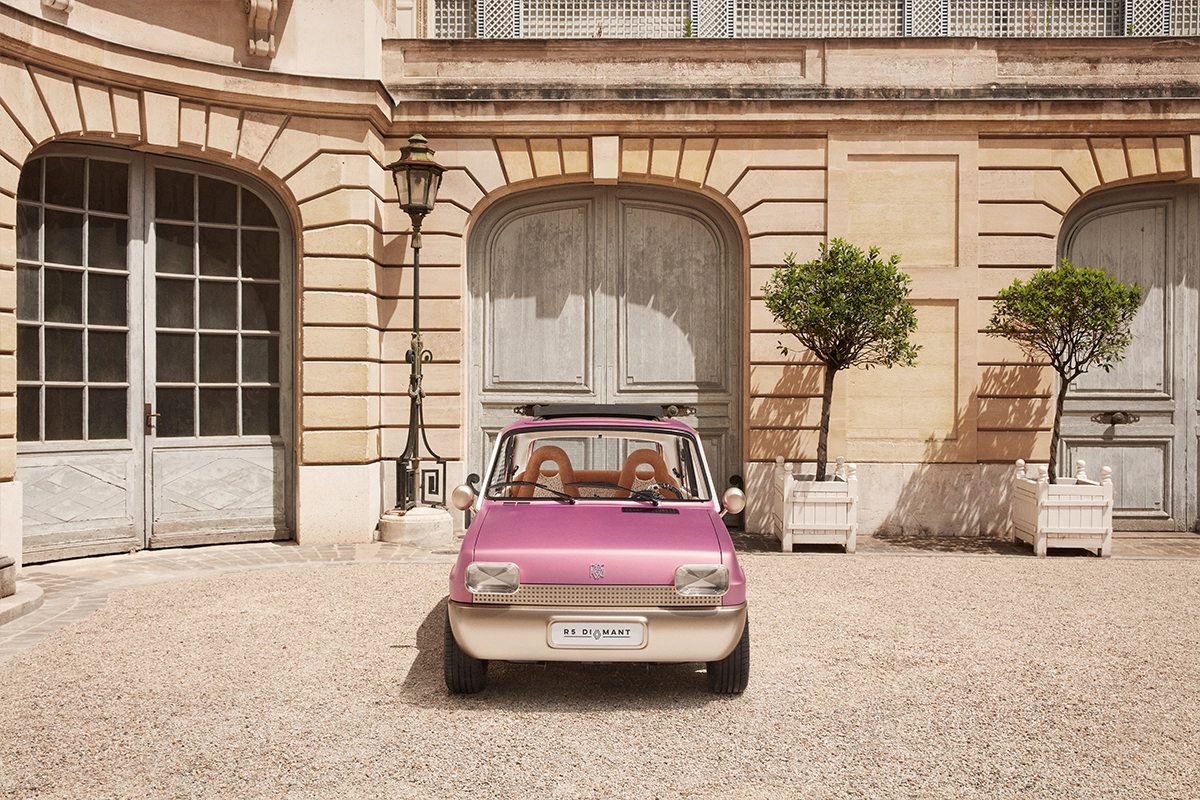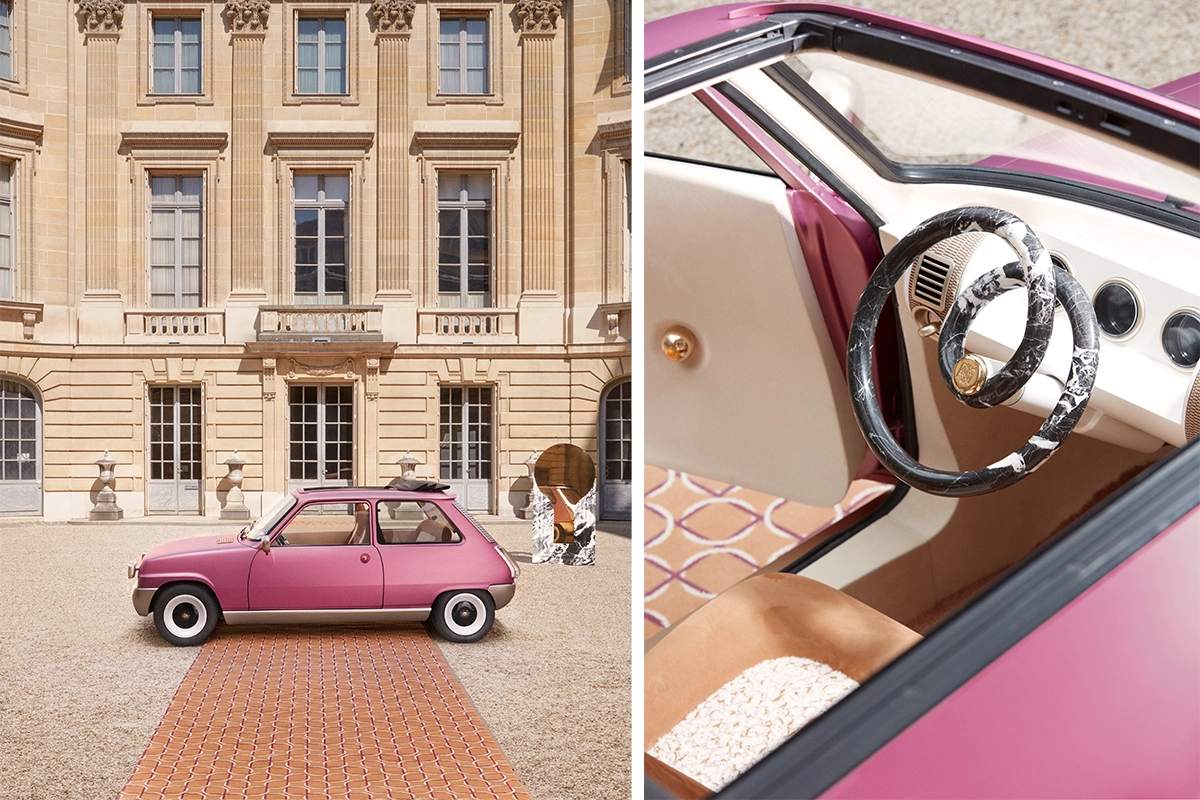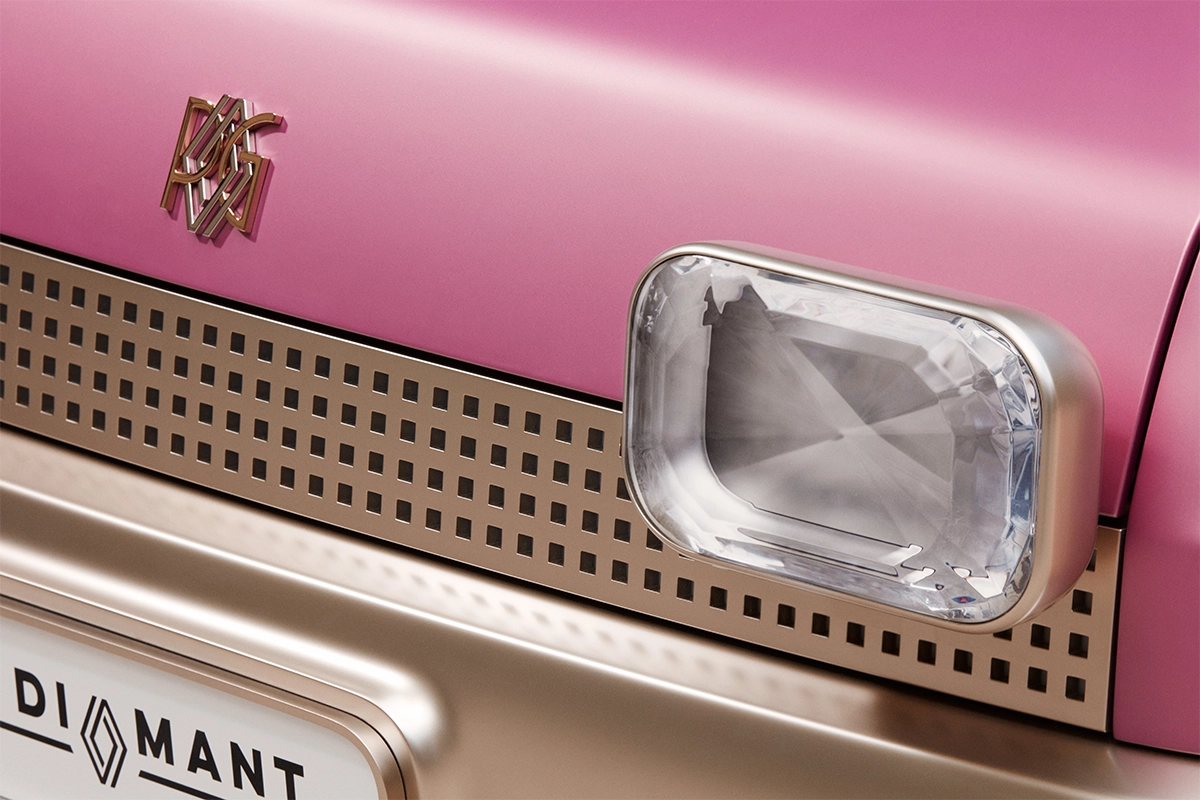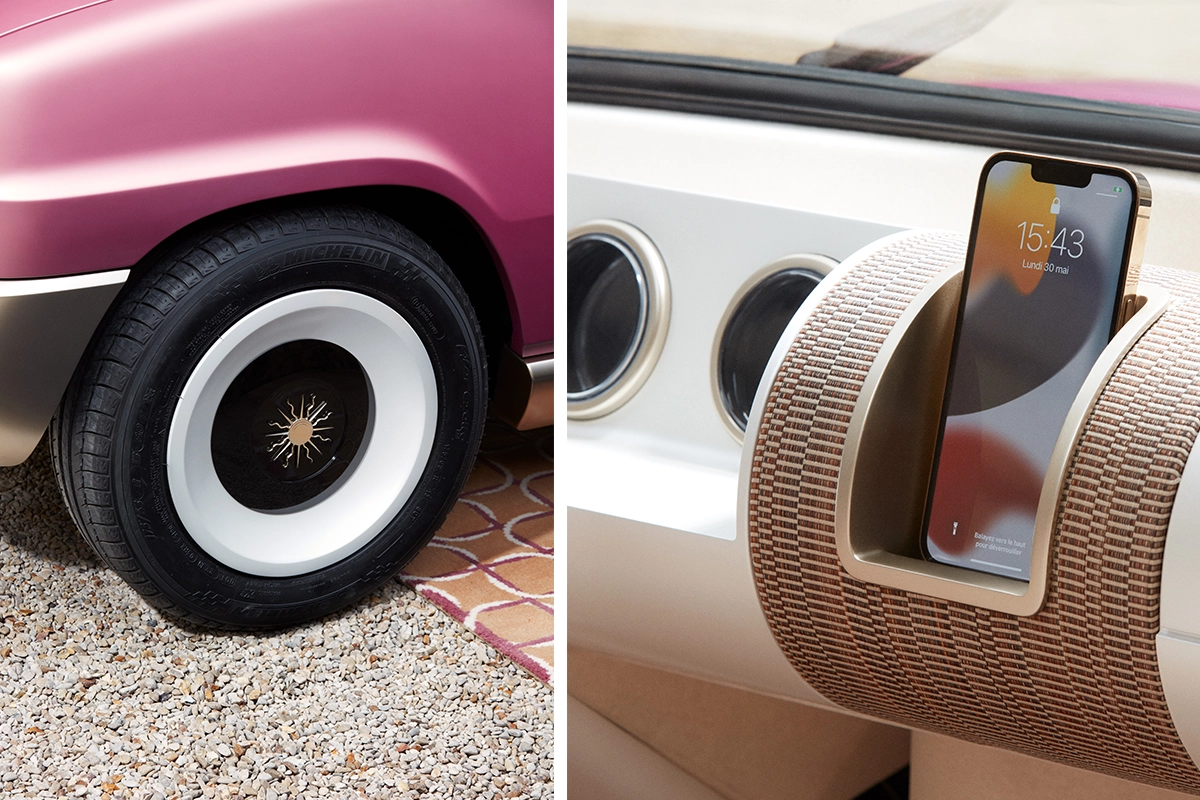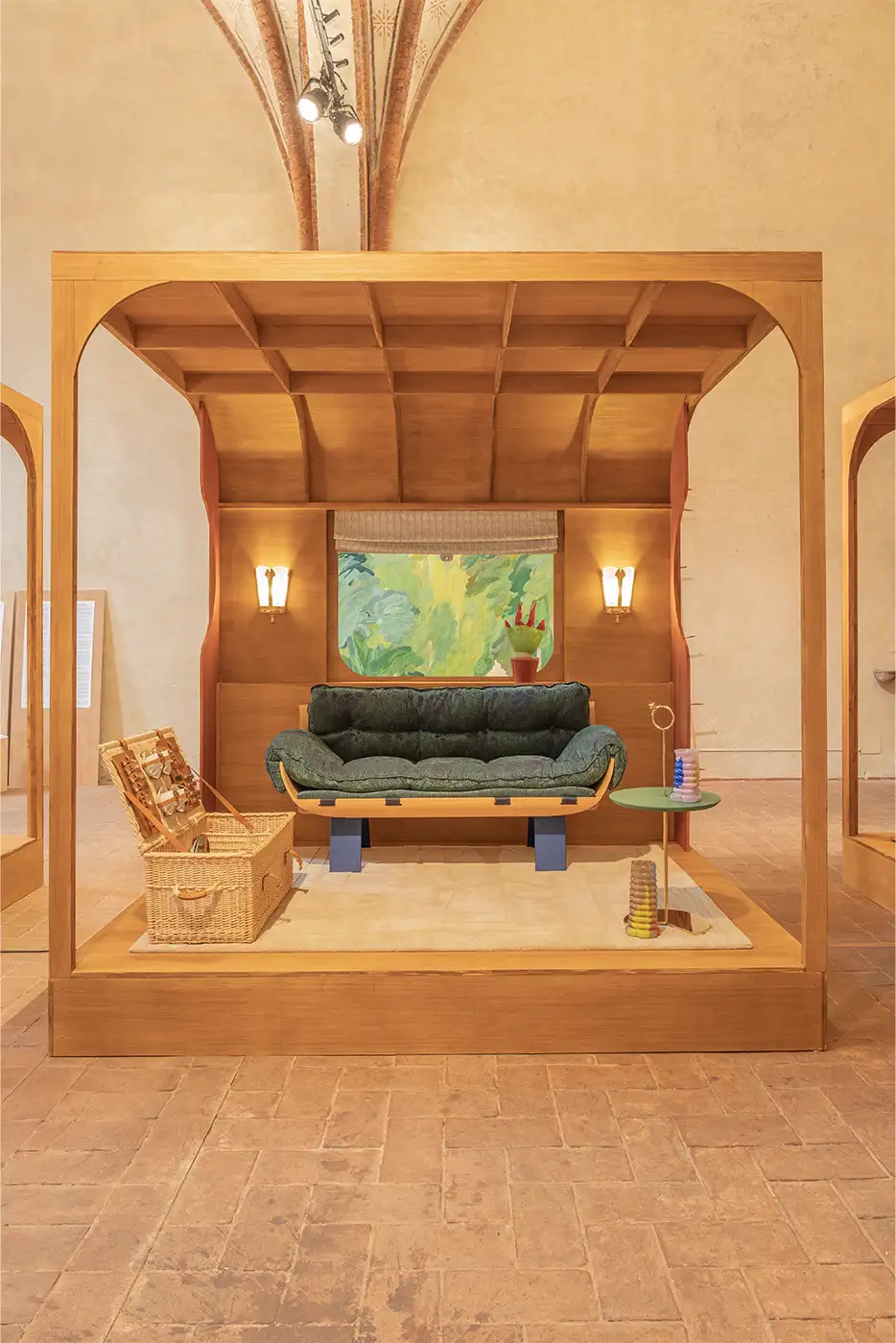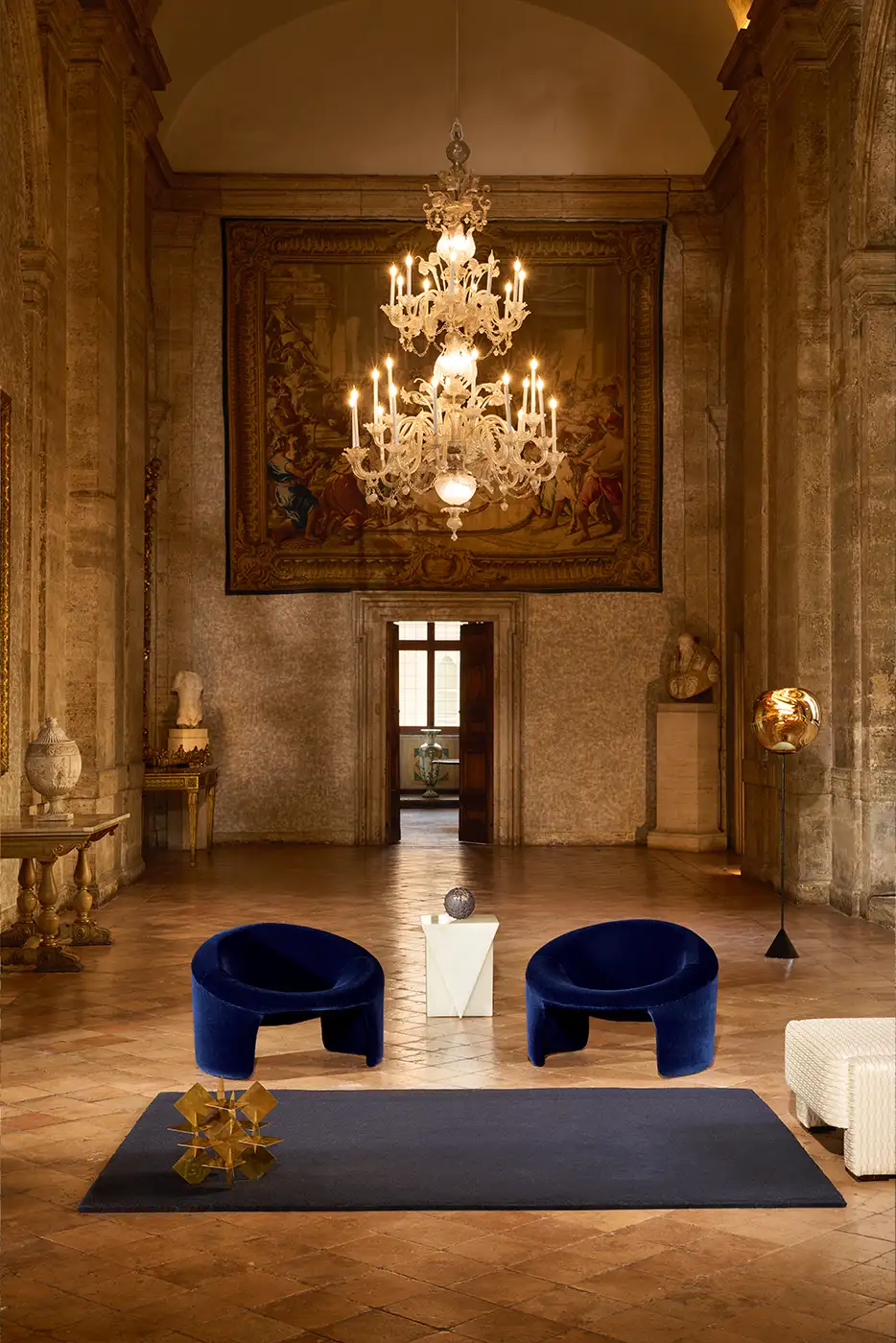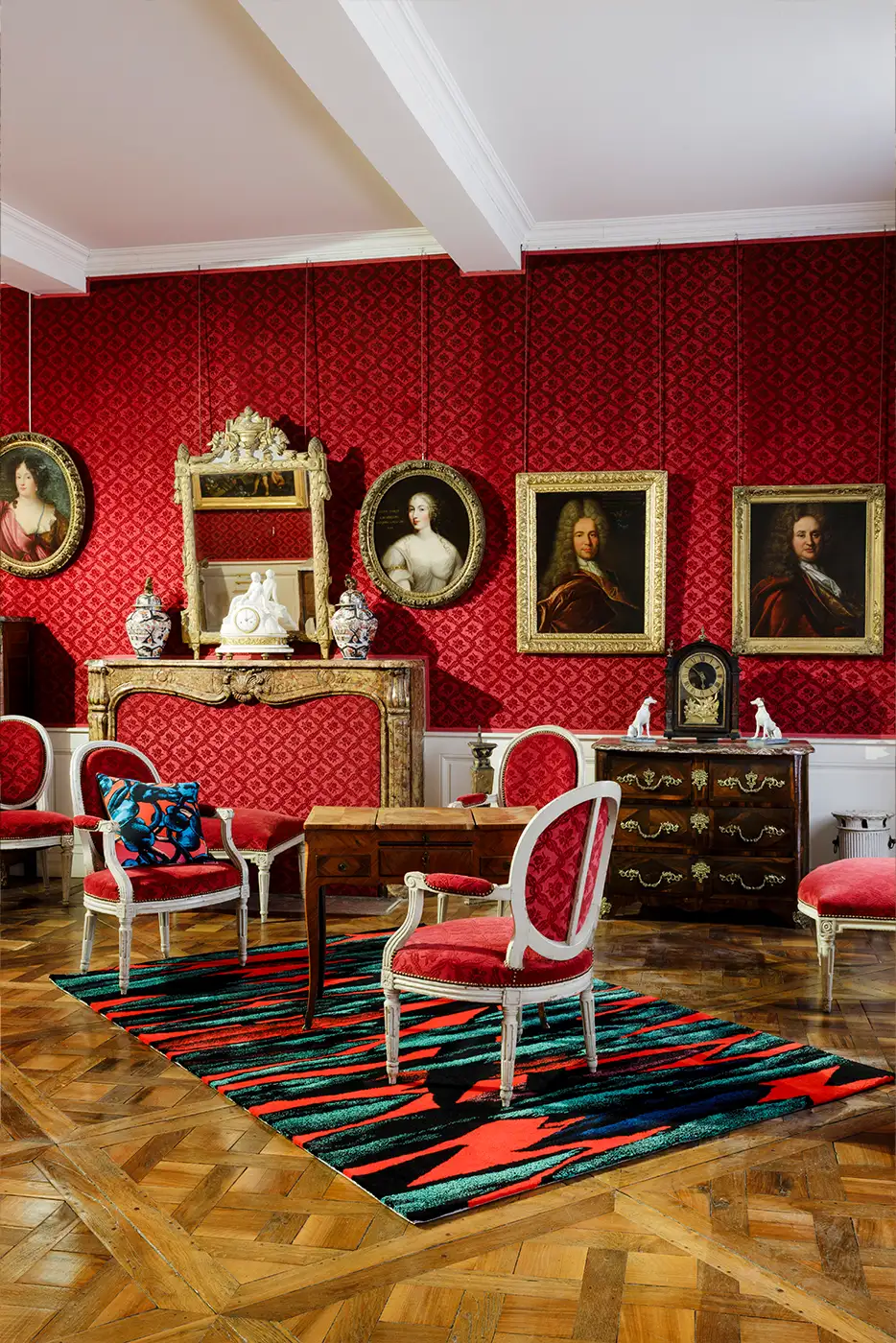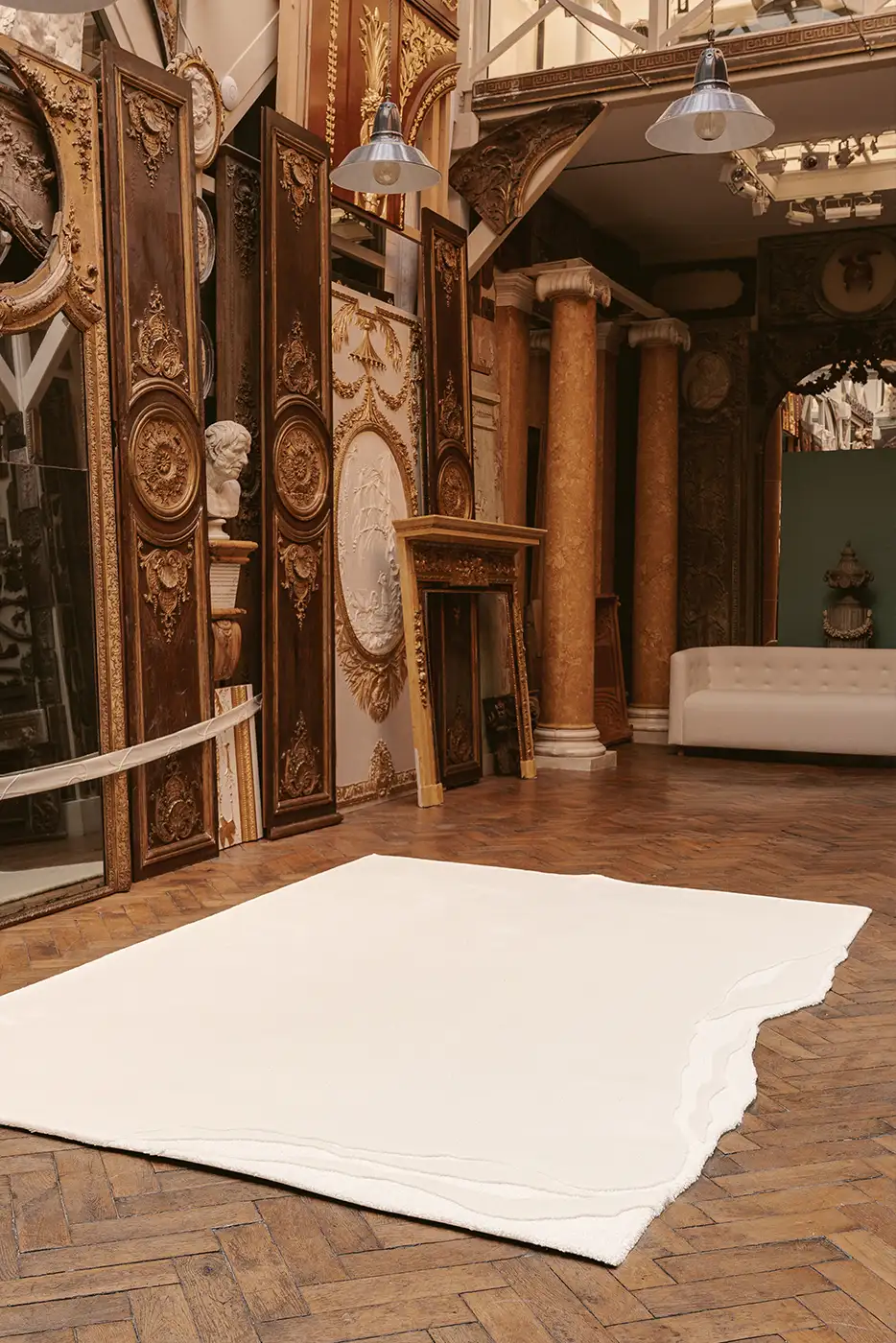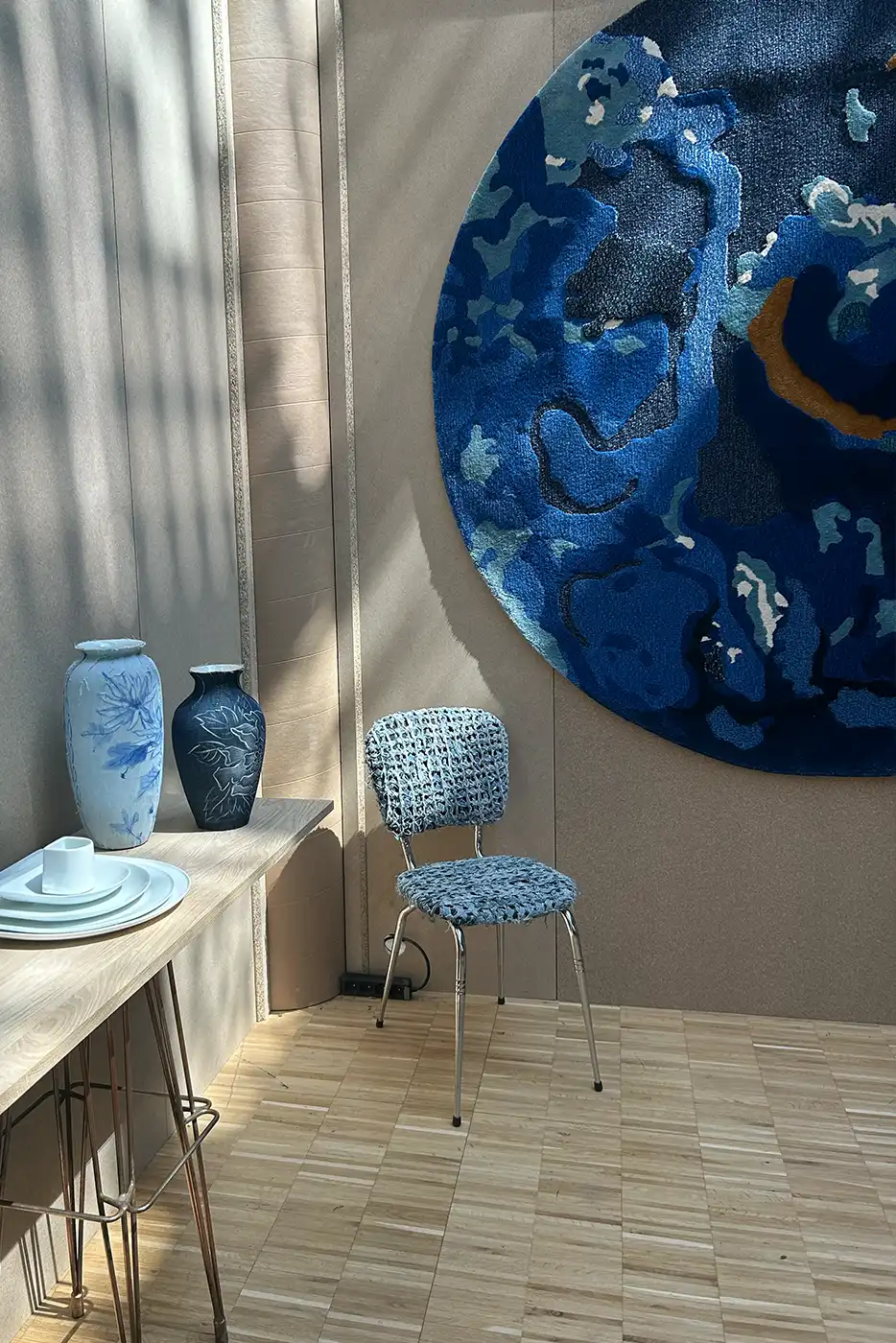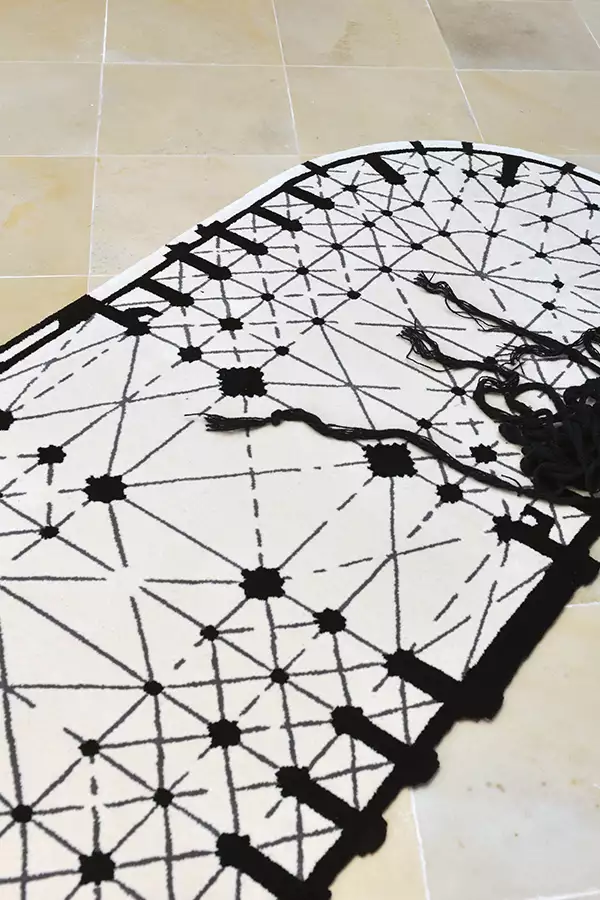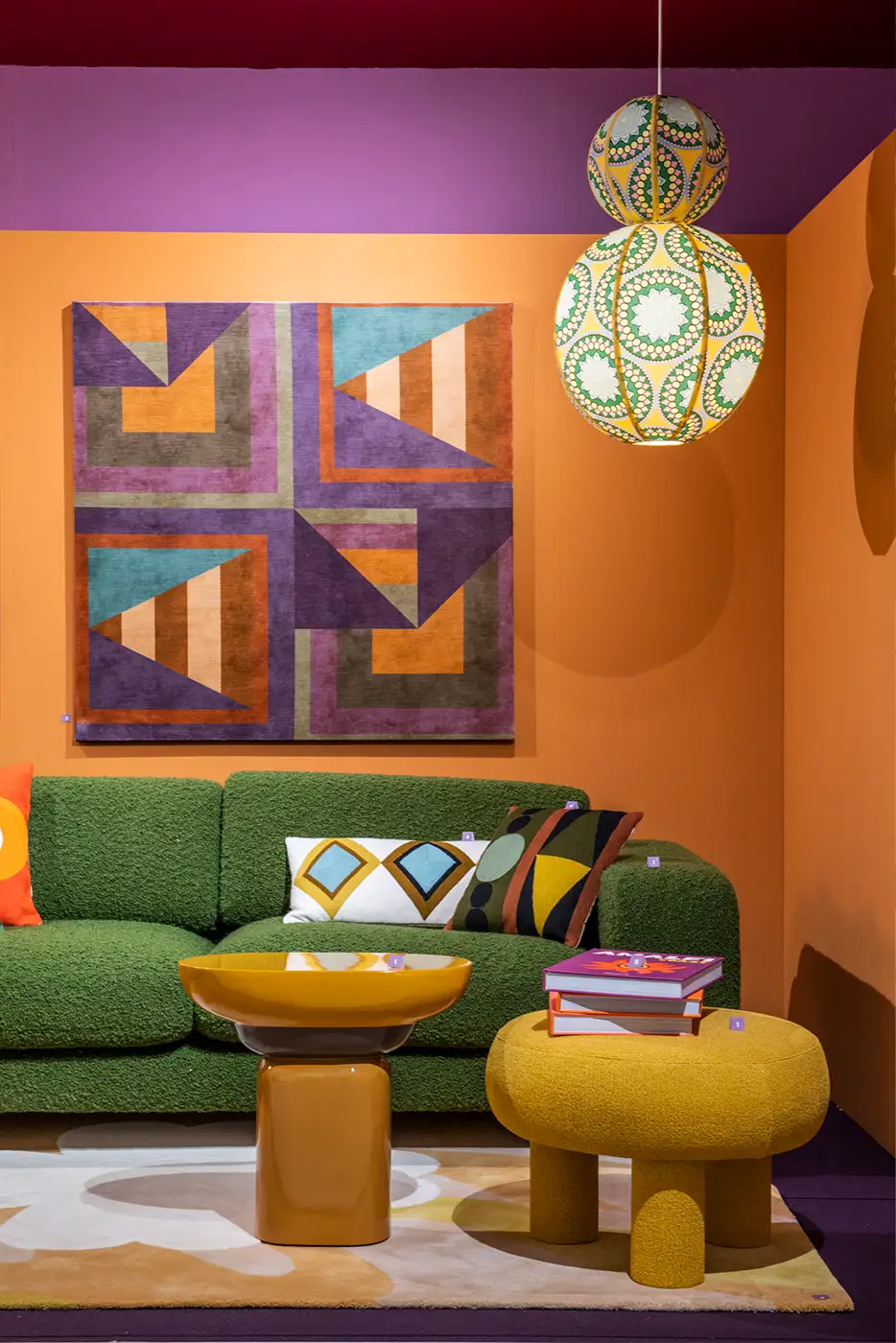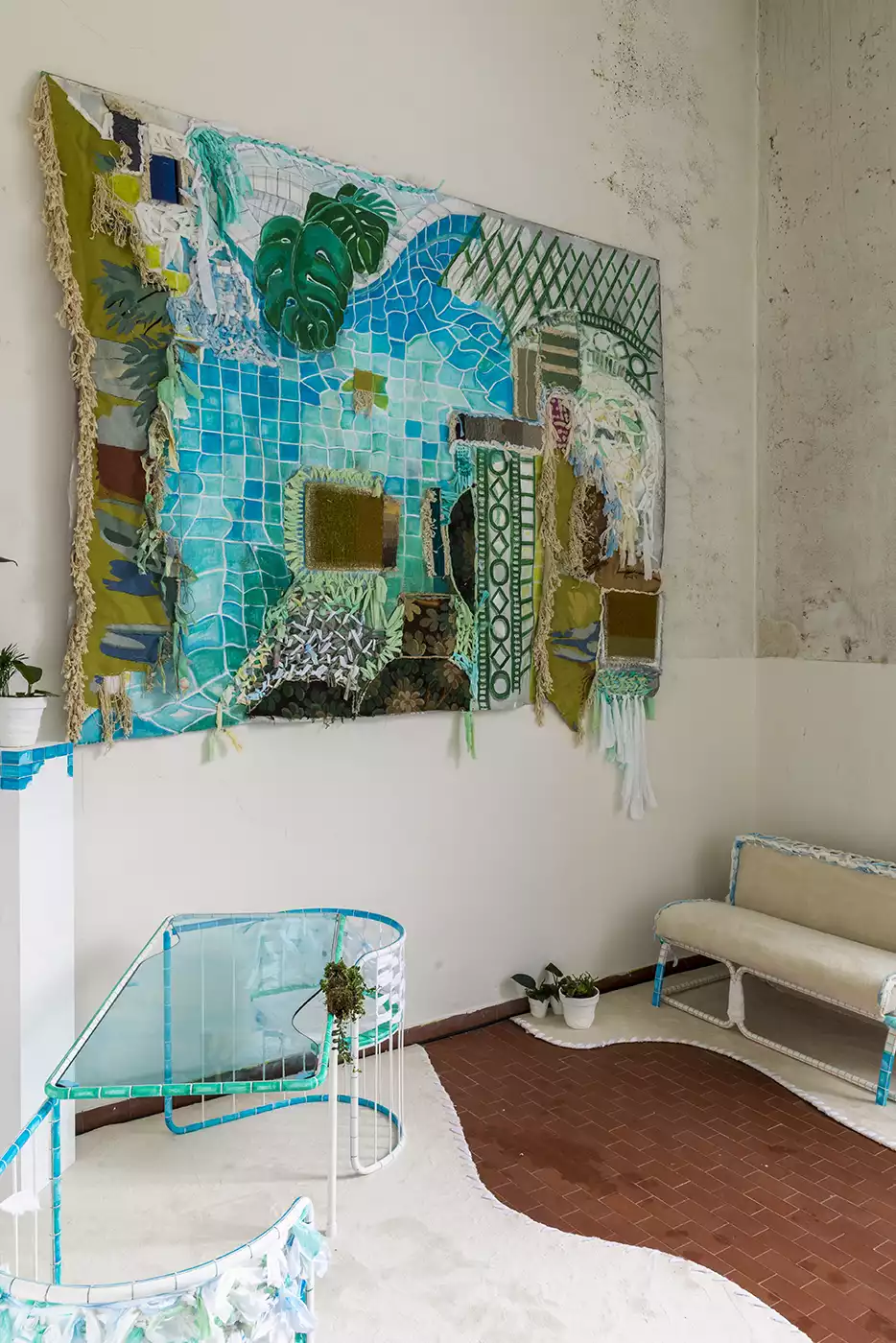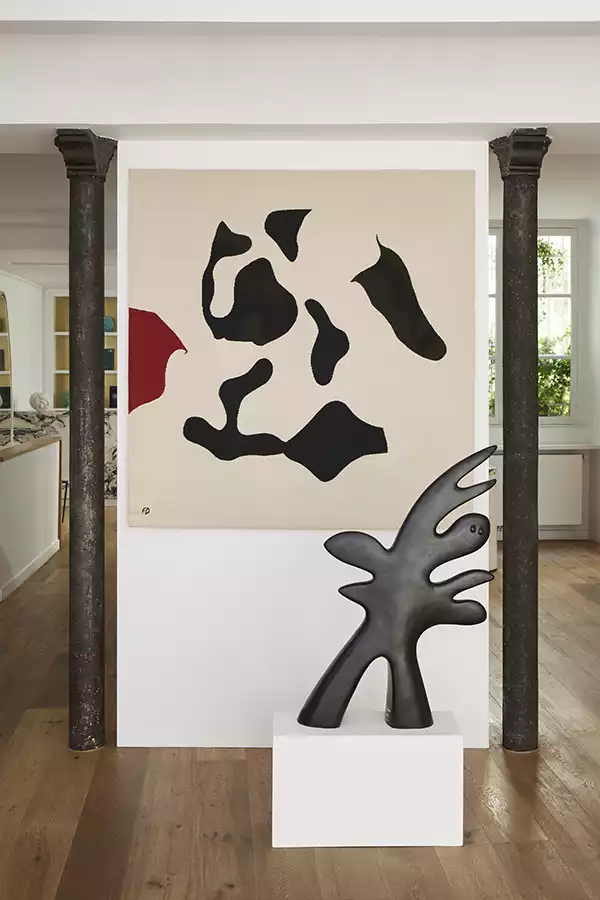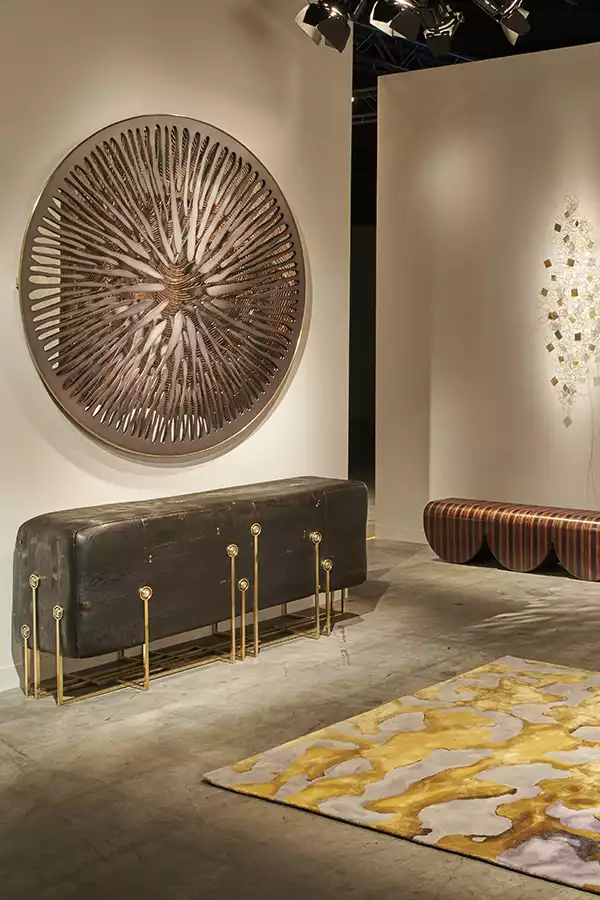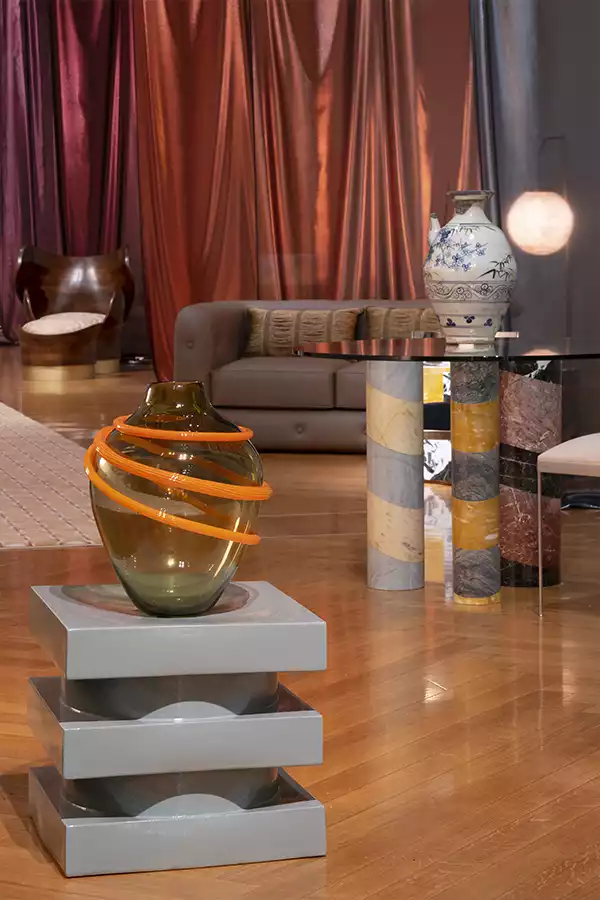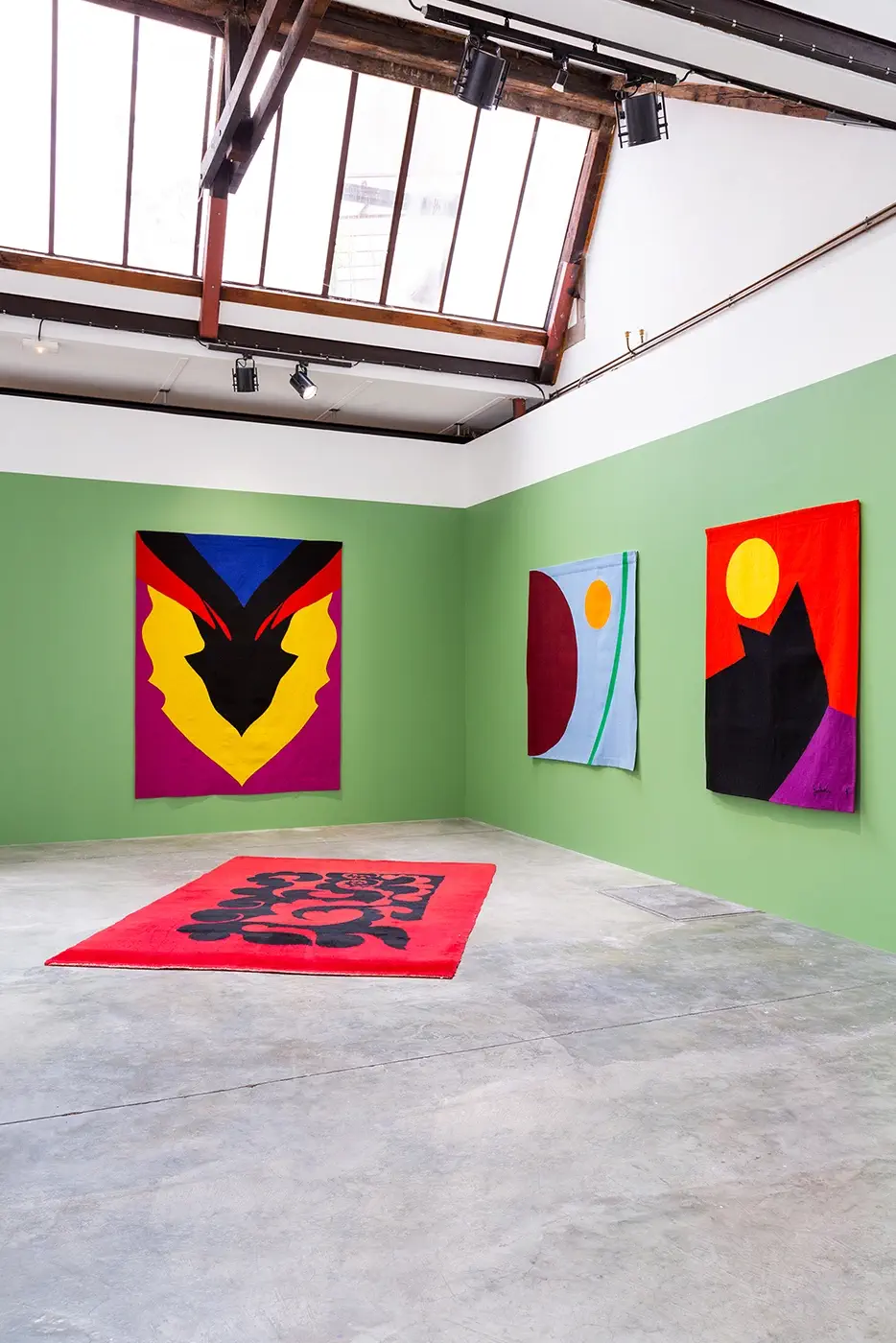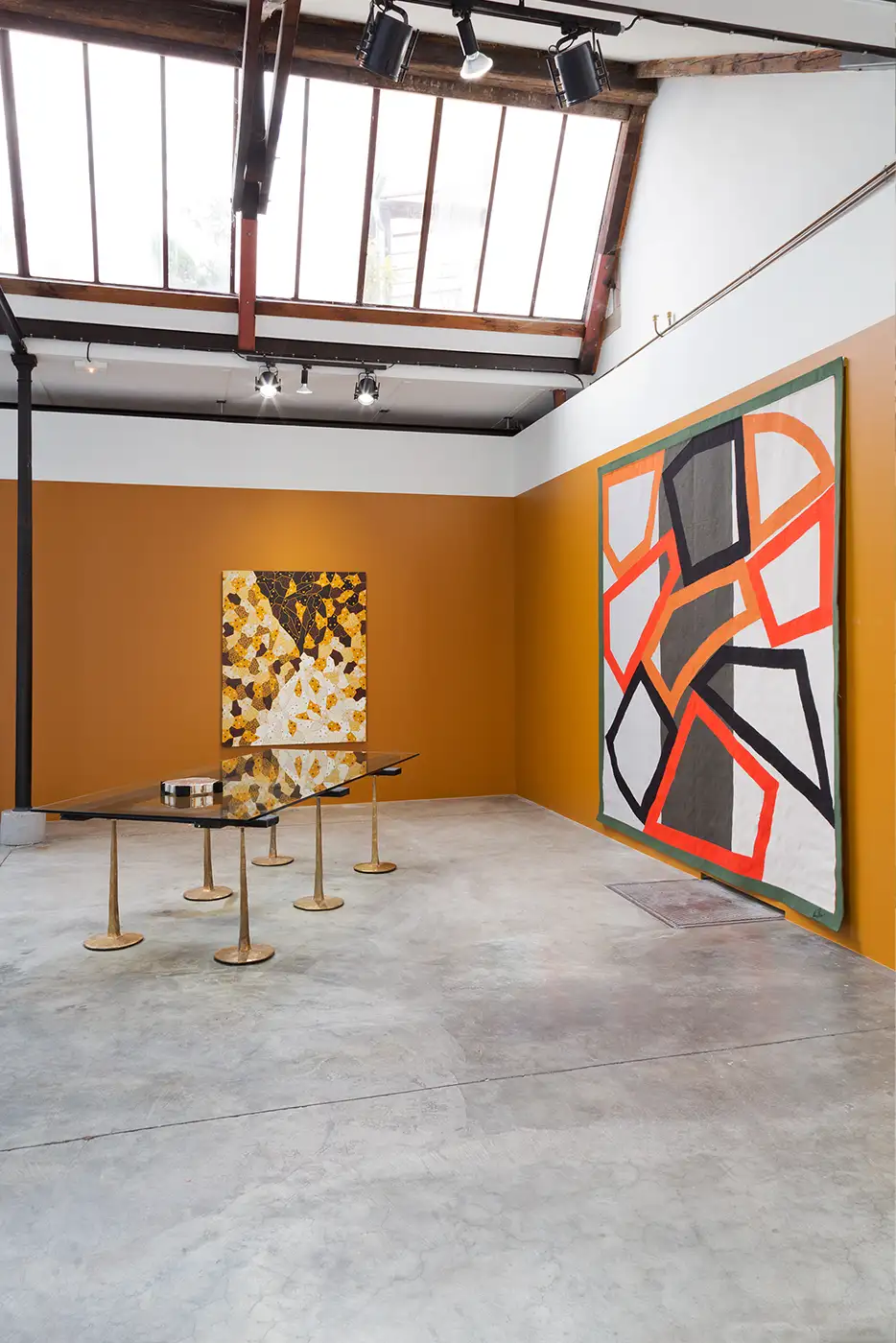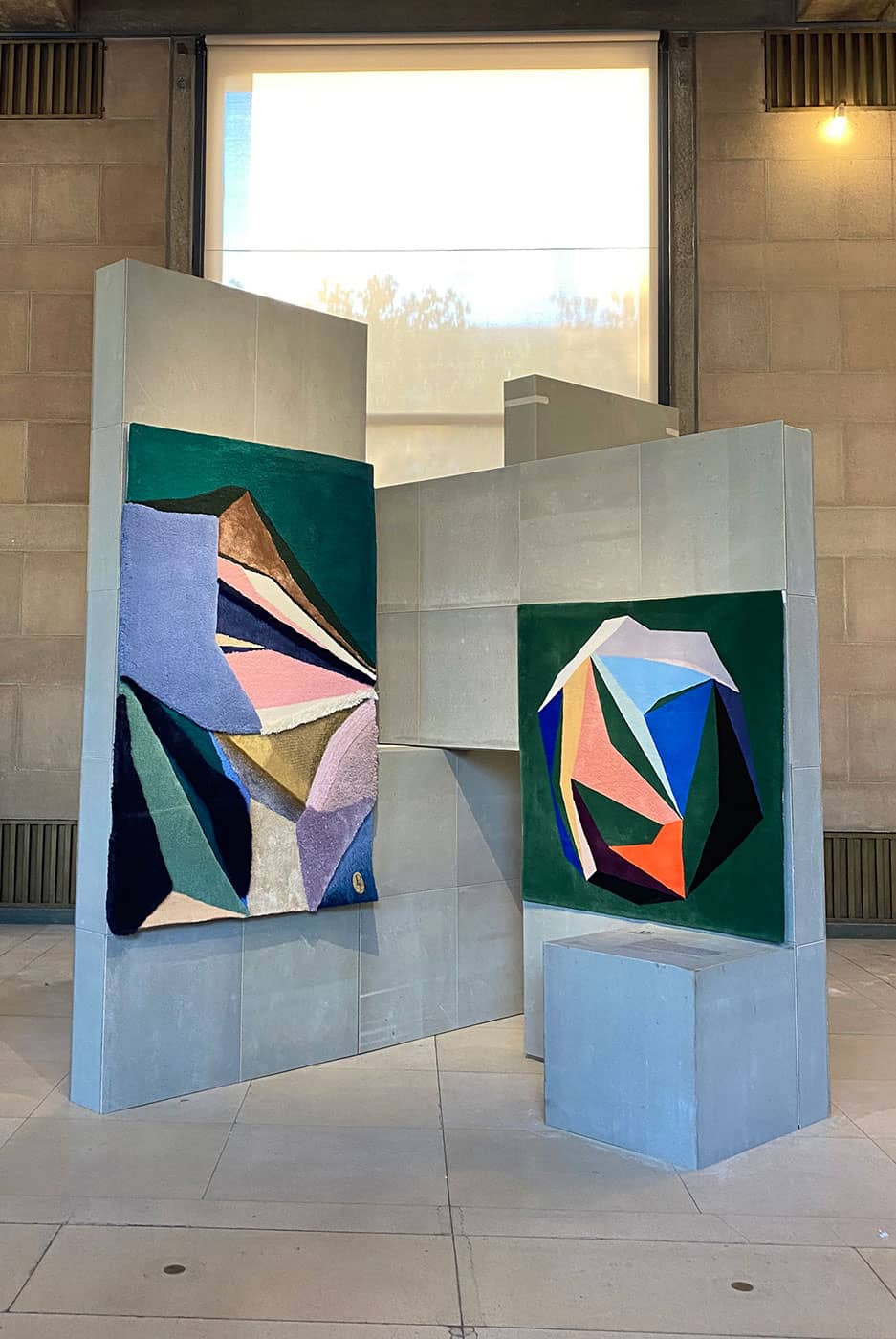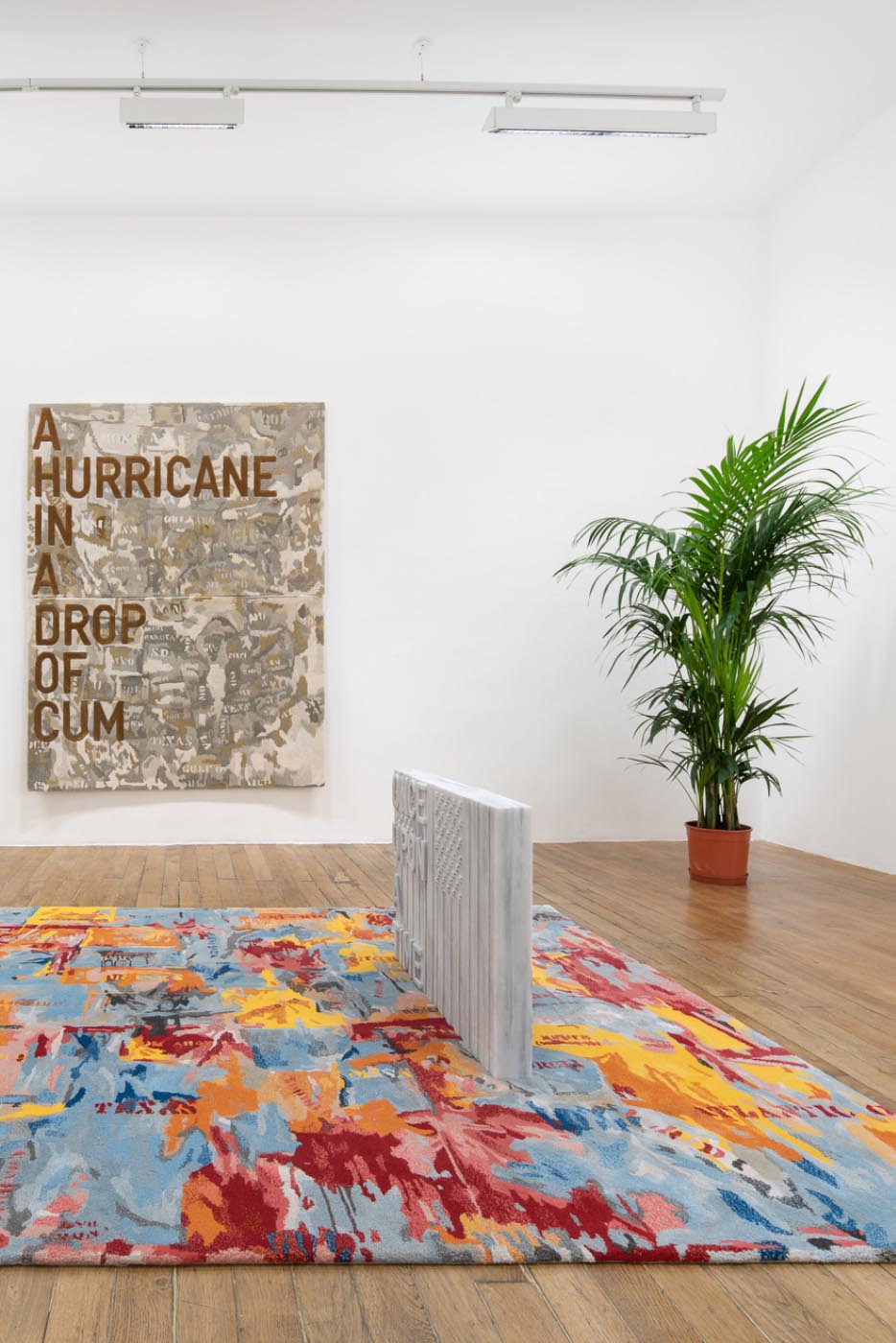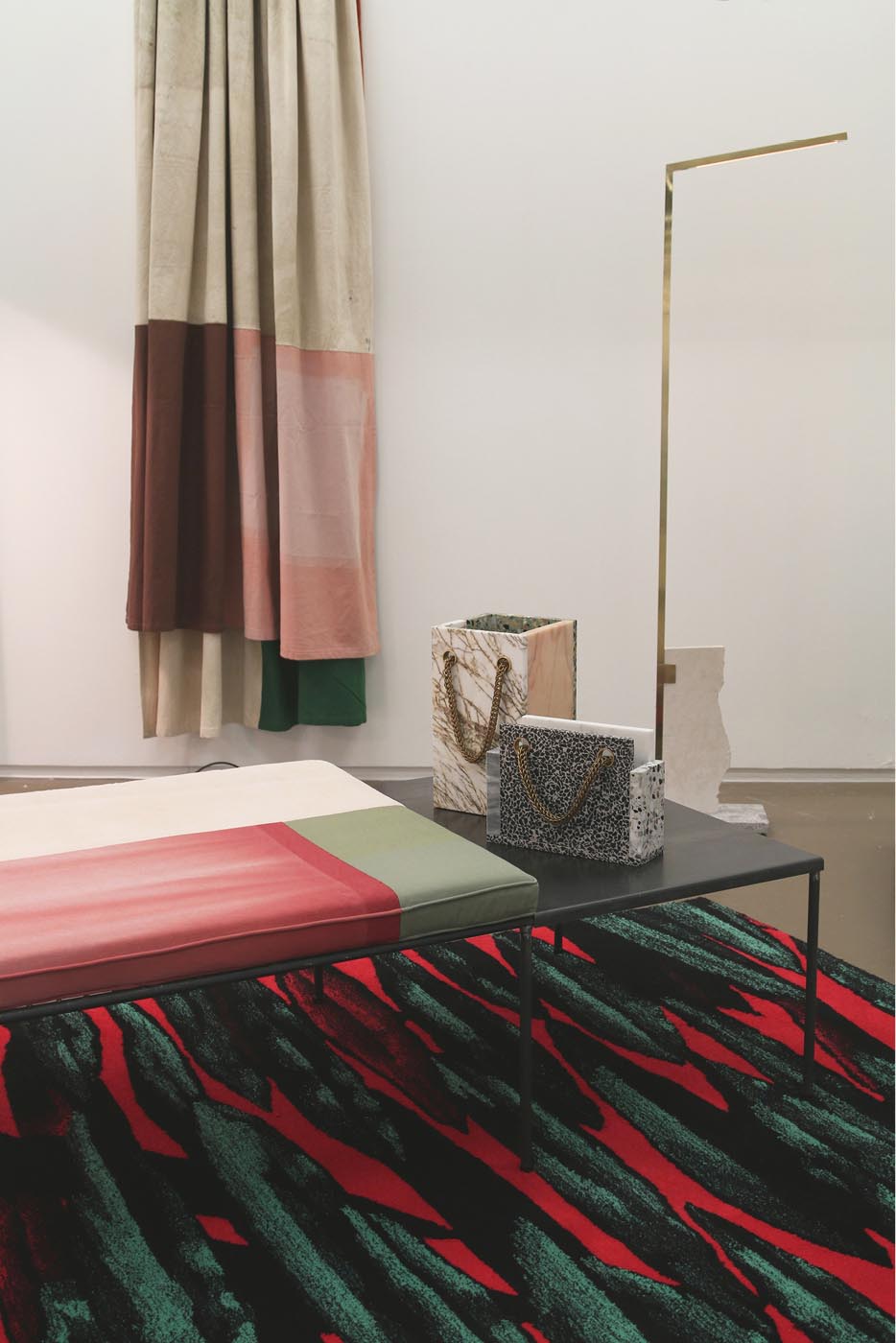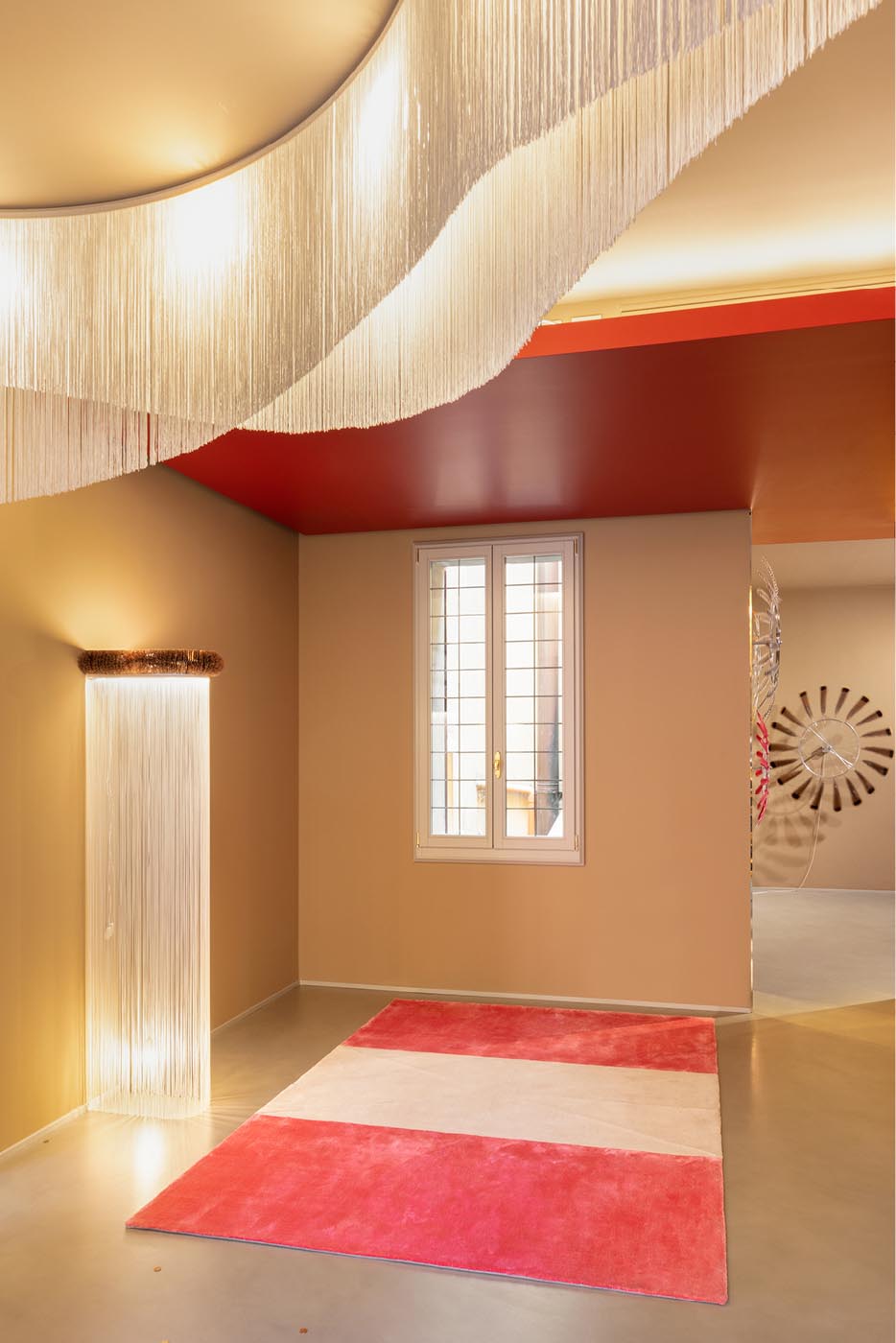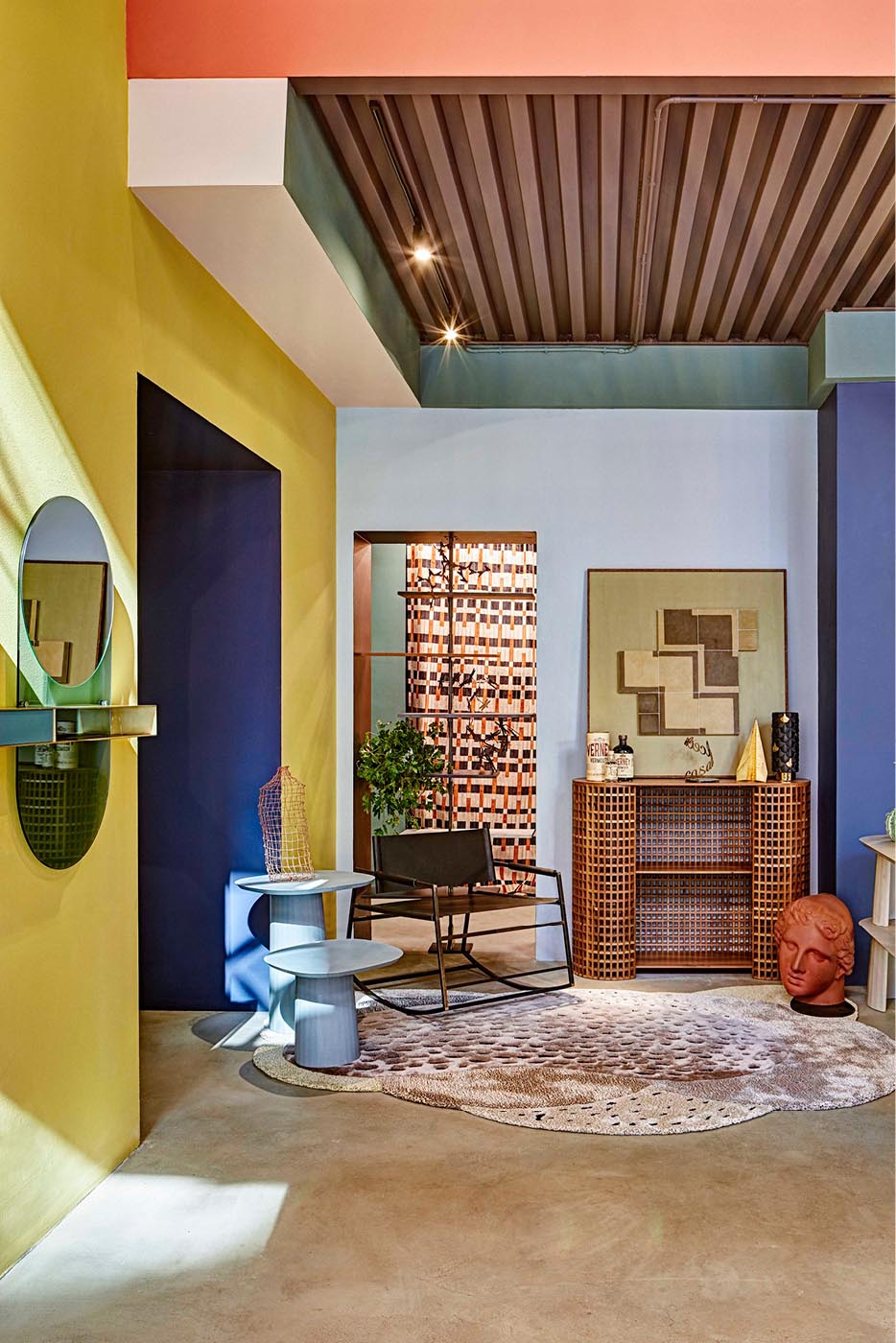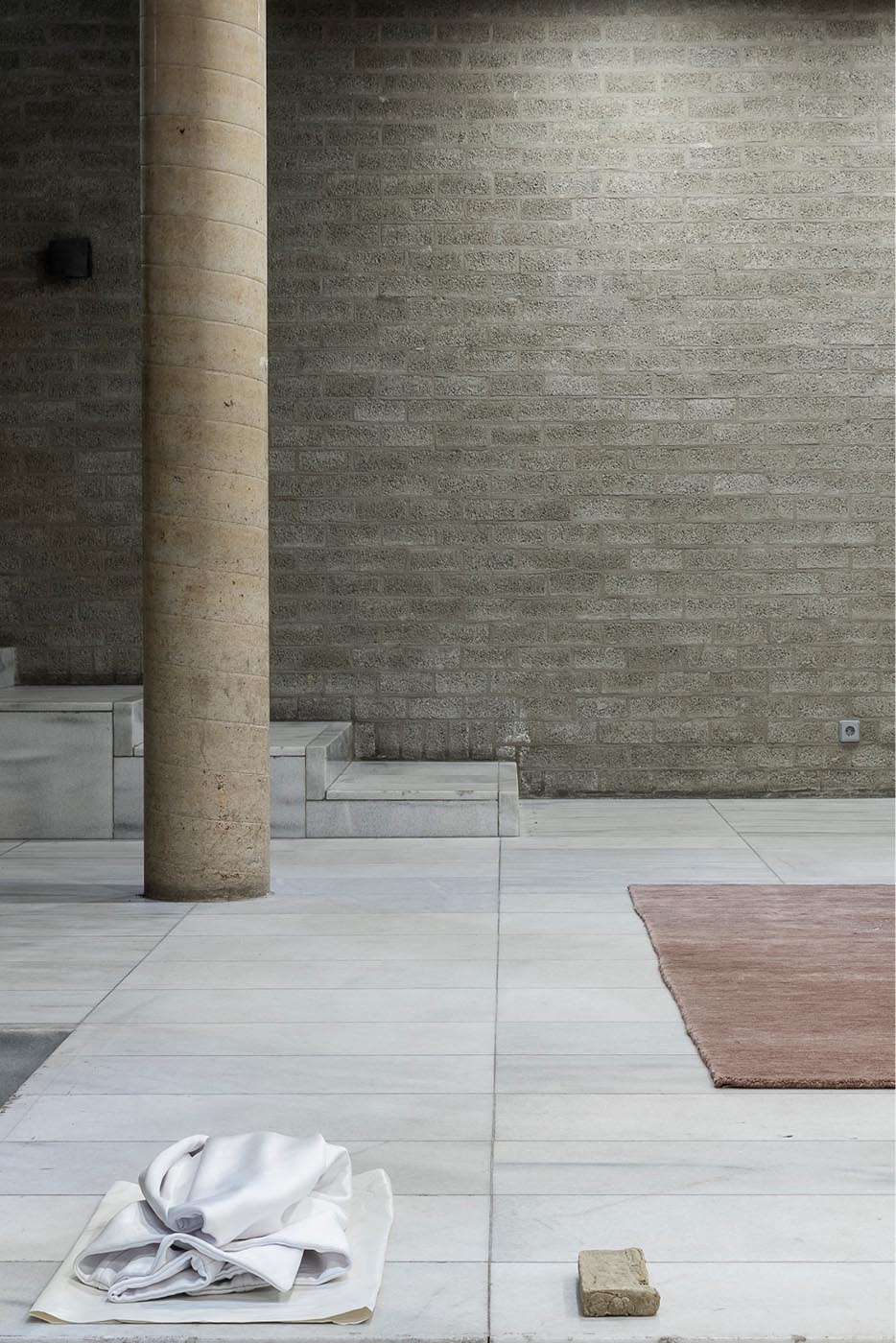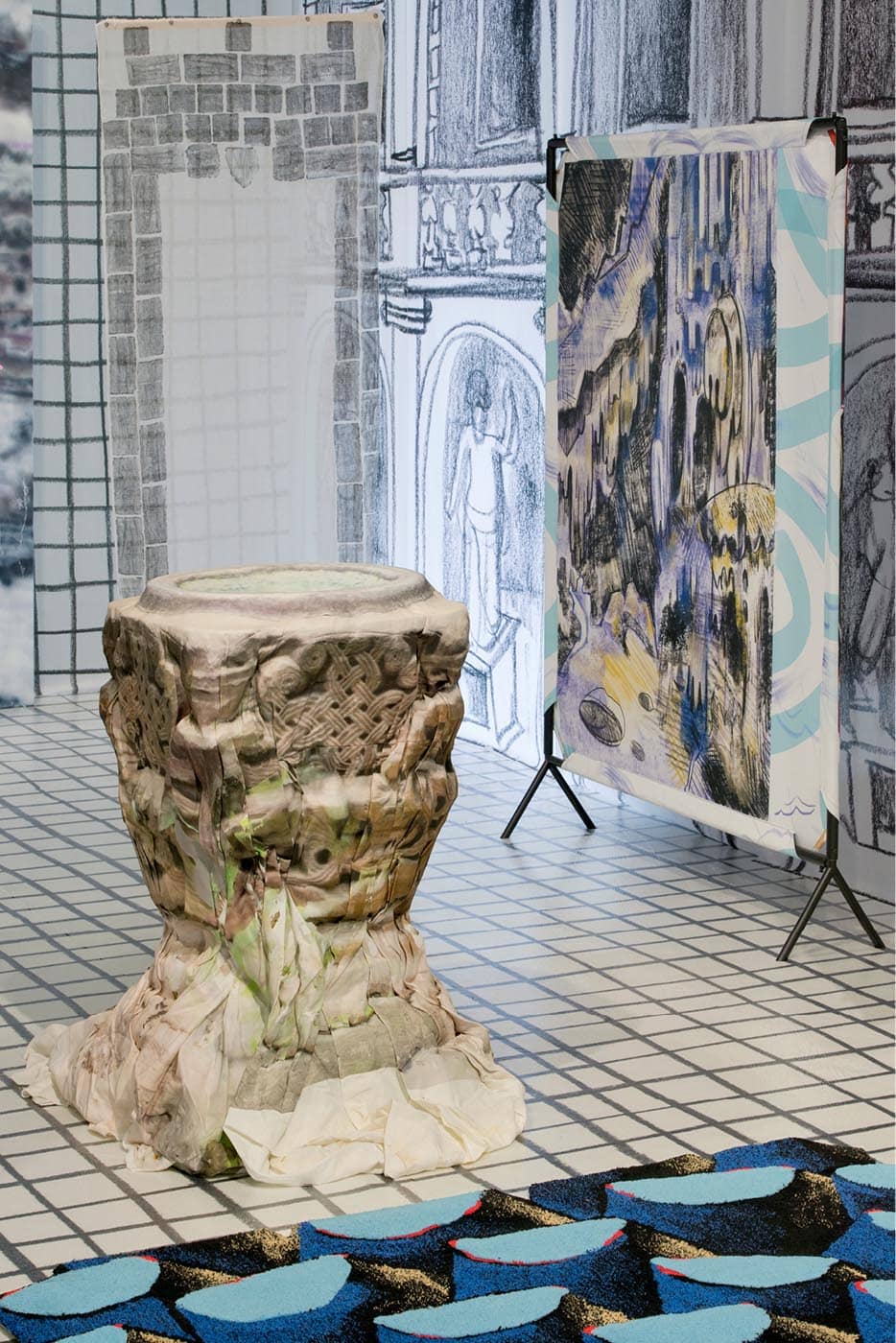Renault 5 Diamant by Pierre Gonalons
Renault 5 Diamant, an electric show-car developed with Pierre Gonalons for the model’s 50th anniversary
Design by
Pierre Gonalons
Photo © Gaëlle le Boulicaut
Source texte : Renault Presse
“2022 marks the 50th anniversary of one the brand’s icons, Renault 5. True symbol of the pop-culture, mor e than 5 million units of the model were sold in several countries between 1972 and 1984. Renault has lined up a series of events, activations, and operations on social networks.
Today it is a new collaboration between Renault and French designer Pierre Gonalons that is making news. To celebrate this iconic model’s 50th anniversary, Renault decided to join forces with a prominent designer who ranks among Architectural Digest’s 100 leading creators and representative of French arts and crafts.Pierre Gonalons’ inspiration came from the decorative arts, and particularly from fine jewellery, which you can see in several delicate and innovative details. Renault 5 Diamant has kept the instantly recognisable look and unmistakeable shape of the original “Supercar” that first rolled off Renault production lines in 1972. But a lot has changed beyond the familiar silhouette. The first modern touch is under the bonnet: a 100% electric engine. Visually, the design includes first-rate details merging into an all-new, sophisticated effect that urges you to take a closer look. […]
Renault 5 Diamant looks great down to the tiniest details. It is made from superlative materials supplied by craftspeople who have earned acclaim for their unrivalled expertise and excellent handwork.[…]
Several artisans who work with Pierre Gonalons on a regular basis also pooled their expertise on this project. Specifically, the steering wheel and storage compartment are made of French Grand Antique d’Aubert marble recycled by Minéral Expertise and cast into tubes to make it lighter and more malleable; the fabric covering the seats was produced by textile creator Métaphores; the horsehair fabric covering the dashboard is made by Le Crin, a century-old establishment that weaves this material by hand; the mohair wool carpet is made by Pinton, one of France’s last tapestry artisans, based in Aubusson; lastly, the gilding on the car’s finishing touches, including the monogram on the bonnet, is made by Bertin-Aubert, an atelier in Paris known for its punctilious workmanship.”

